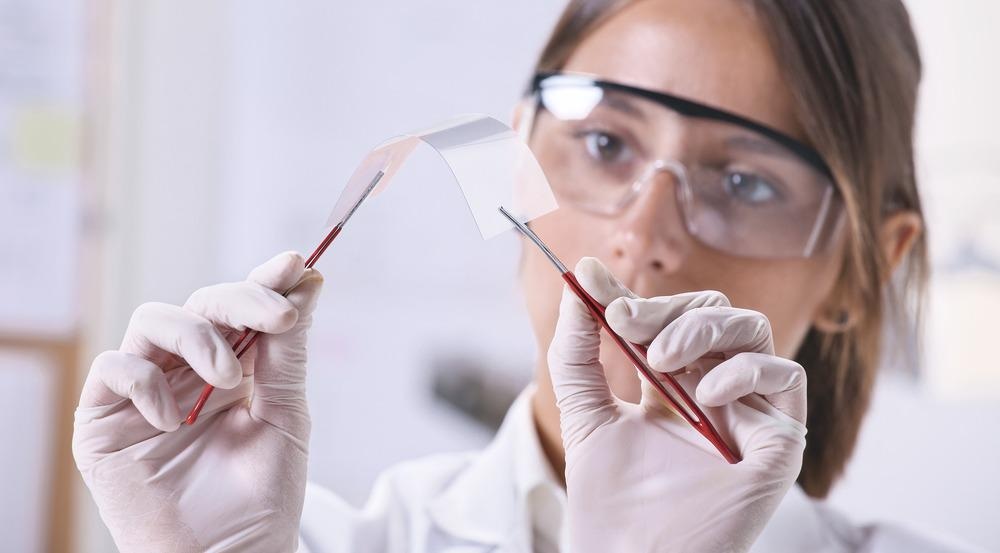Monitoring air quality is increasingly important for populations’ health and wellbeing. With cities – and air pollution – continuing to grow, gas sensors could be used in important public health settings.
However, the current gas sensors available are prohibitively bulky and expensive. Low cost, miniature gas sensors the size of a computer chip could be manufactured using new layered materials production technologies.
This would enable them to be deployed widely and connected with the Internet of Things (IoT), providing public health departments, employers, and individuals with accurate, granular air quality data.
Quellmalz’s research is focused on new technologies for replacing the gas sensors available today with low-cost, miniature sensors using new layered materials production technologies and graphene.
Using Graphene for Gas Sensing Applications

Image Credit: BONNINSTUDIO/Shutterstock.com
Quellmalz’s PhD project at KTH Royal Institute of Technology in Switzerland explores ways to integrate ultrathin layered materials such as graphene with existing semiconductor manufacturing processes.
It also builds on the latest developments in air quality monitoring technology for small and affordable applications, such as miniature chip-sized gas sensors. His research was published in Nature Communications in 2021.
Quellmalz is joined by colleagues at the Catalan Institute of Nanoscience and Nanotechnology in Spain, and industry partners SenseAir AB in Sweden and AMO GmbH in Germany.
The team works with techniques, materials, and tools that have already been established in the semiconductor industry. This ensures its solutions can be easily integrated into existing manufacturing processes, which will enable the manufacturing of miniature gas sensors with minimal production costs and power consumption involved.
How Is Graphene Used for Manufacturing Gas Sensors?
When manufacturing with layered materials, transferring the layered material from the substrate that it was grown on is a critical and difficult step in the process. This may cause deformations in the layered material, which can degrade its desirable electric properties in the case of graphene.
Quellmalz and colleagues used a standard dielectric resin to obtain stacks of graphene and other layered materials. The resin worked like glue, holding together layers of silicon, graphene, and copper in the sensor.
The team heated this stack of materials and pressed it together, before repeating the process to stack more layers on top.
The resin material is solid at room temperature but becomes viscous when heated. This means that upon each repeat of the layering and pressing process, the resin softens and acts as a cushion.
This in turn enables the previous stack to conform to the surface shape of the next layered material, without deviations or cracks.
Now that this technique has been demonstrated in laboratory settings, the team is working on ways to bring it to large-scale production of electronic devices.
Benefits of Low-Cost, Miniature Gas Sensors
Cheap, compact gas sensors could be used in smartphones and wearables to alert users about poor air quality and the presence of harmful gases. The sensors that Quellmalz and his colleagues are developing could be deployed anywhere there is a need for air quality monitoring.
As air quality varies street by street, the level of granular, real-time data that such a deployment could provide would help to keep people safer from air pollution.
Next Steps for this Research
Quellmalz believes that this research can find applications in any manufacturing process that calls for integrating layered materials. It is a generic process that can be applied to photonics, sensing, and neuromorphic computing.
Because the team used established processes and materials, the technique can already be widely deployed. Researchers are currently working on ways to bring the new approach to transfer and integration of layered materials to industrial processes.
References and Further Reading
Diamante, Letizia (2021) Miniaturising Gas Sensors for Air Quality Monitoring. Graphene Flagship. [Online] https://graphene-flagship.eu/graphene/news/spotlight-miniaturising-gas-sensors-for-air-quality-monitoring/.
Quellmalz, Arne et al. (2021) Large-Area Integration of Two-Dimensional Materials and Their Heterostructures by Wafer Bonding. Nature Communications. https://doi.org/10.1038/s41467-021-21136-0.
Disclaimer: The views expressed here are those of the author expressed in their private capacity and do not necessarily represent the views of AZoM.com Limited T/A AZoNetwork the owner and operator of this website. This disclaimer forms part of the Terms and conditions of use of this website.